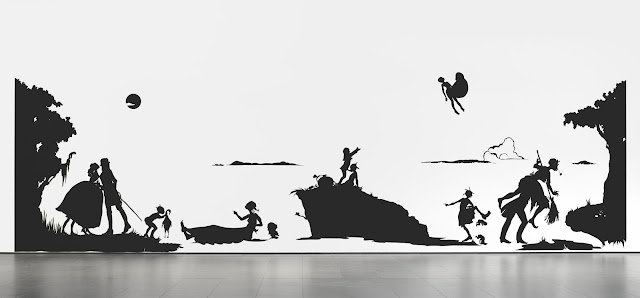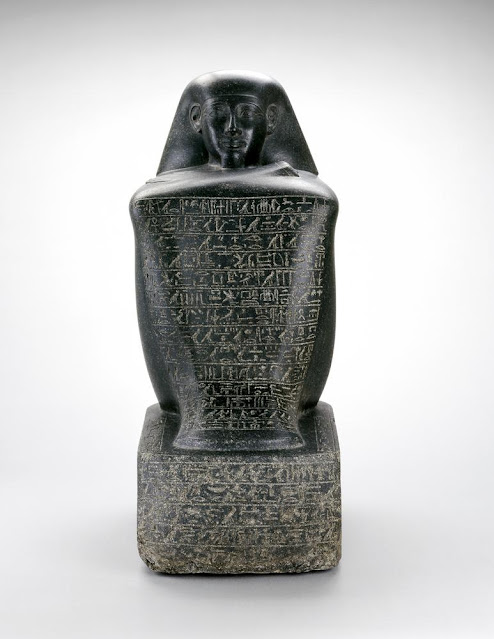A shape is a defined area within a composition. Shapes can be either two-dimensional or three-dimensional. We sometimes refer to three-dimensional shapes as forms.
Geometric, Organic, and Amorphous Shapes
Most shapes can be described as either geometric, organic, or amorphous.
Geometric Shapes are often hard edged and contain angles, but perfect circles and ovals also fit this category.
Here are two relatively simple examples - one painting and one sculpture. The Esther Stewart painting consists of nothing but overlapping multi-colored rectangles. The Dan Graham sculpture consists of rectangular steel bars that create both squares and triangles, as well as circular mirrors and glass cut-outs. Both pieces are constructed entirely of geometric shapes.
This more complex example below contains mostly geometric shapes. We can see them in the the architecture and towers, the polyhedrons on top of the towers, and the stacked walls in the background. Although the composition is dominated by geometric shapes, we do however see some organic shapes as well, such as in the plant-life in the bottom left corner.
Organic Shapes are irregular and often curved or rounded. They seem more relaxed than geometric shapes.
The Wave is full of organic shapes - rounded curved forms created by both the blue bodies and white peaks of the waves.
Amorphous shapes are only found in two-dimensional artwork and almost never exist in sculpture.
Figure and Ground
Shapes can help create space by defining a figure and a ground.
The figure is everything that seems to be “on top.” The figure is sometimes also referred to as positive space.
The ground is what is behind the figure. The ground is sometimes also referred to as negative space.
Let's take a look at this fairly simple example of figure and ground.
This is an installation created from cut paper adhered to the gallery wall (you can see the floor at the bottom of the photograph). In the work above, everything in black is the figure (or positive space) and everything in white is the ground (or negative space).
If you look closely at the image, you may see some unsettling subject matter. Kara Walker is a contemporary artist who deals with current issues of race by using imagery from the antebellum South. We'll look at her more later.
This next example is a little more complex, but there is still a figure and ground. The woman with the bouquets of flowers can be read as the figure, and everything behind them in the room composes the ground (I've darkened the ground on the right).
Sometimes, there is no figure or ground. Nothing in this painting is clearly in front of or behind anything else. The amorphous shapes all seem to exist on the same plane, and there doesn't appear to be any "background."
We don't usually use the terms figure and ground when talking about sculpture, but instead use positive and negative space. The positive space is the sculpture and the negative space is the space surrounding the sculpture.
Open Form vs. Closed Form
Open form and closed form are terms most often used with three-dimensional artworks (sculpture).
Open forms extend into the surrounding space and often have negative space within them. In this Giacometti sculpture we see both arms extended out away from the body as well as negative space between the man's legs.
Closed forms are solid and contained. They do not extend into the surrounding space. Look at the Egyptian sculpture of Sennefer below. The entire body is compact and contained in the solid granodiorite block (a very strong stone). Nothing protrudes from the central body - the arms are folded in close to the chest - and there is no negative space within the form.












